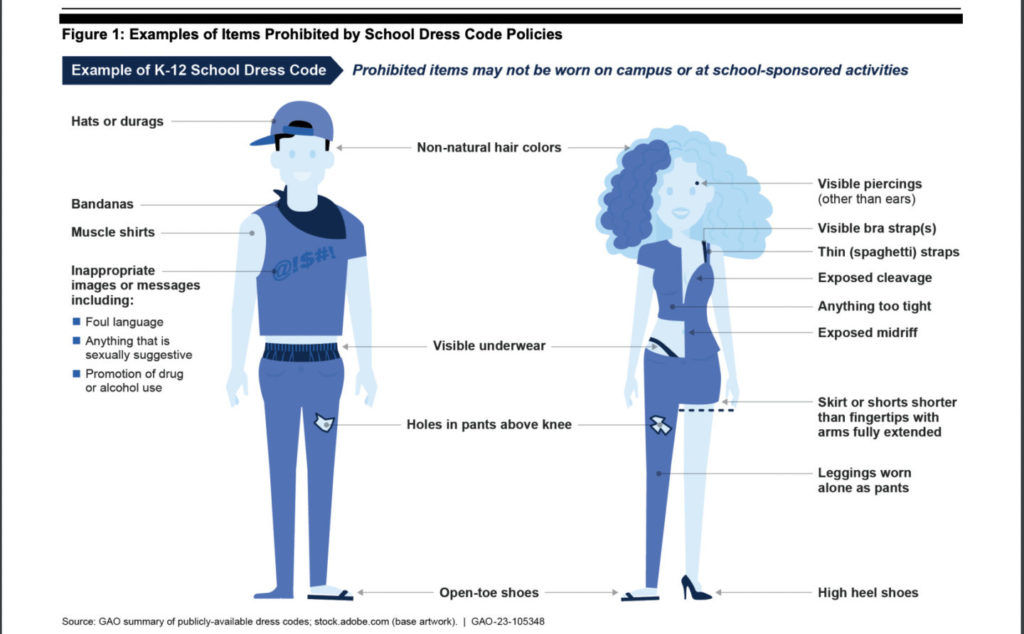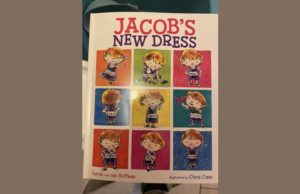Op-ed: School dress codes the latest target of a government agency seeking “equity”
In a stunning example of bureaucratic uselessness, the U.S. Government Accountability Office (GAO) takes many pages, and presumably many dollars, to note that while most public schools have dress…

In a stunning example of bureaucratic uselessness, the U.S. Government Accountability Office (GAO) takes many pages, and presumably many dollars, to note that while most public schools have dress codes, they aren’t all the same.
They even discovered – gasp – that dress codes aren’t uniformly enforced.
These indispensable arbiters of the obvious wrap up their exhaustive report about “Equity and Safety in school dress codes,” released on Tuesday, with four recommendations for the Department of Education (DOE). As befitting such a grand endeavor, these suggestions positively drip with importance and insight.
First, “The Secretary of Education should provide resources to help districts and schools design equitable dress codes to promote a supportive and inclusive learning environment.”
Color me shocked to find out these micromanaging social engineers have not already done this. Indeed, I’m genuinely surprised to learn such low hanging fruit on the tree of fundamental transformation had not yet been picked. Perhaps our latest crop of woke bureaucrats aren’t quite as enterprising as their predecessors.
Secondly, “The Secretary of Education should include dress code information in existing resources on safe and supportive schools. This information could include examples of dress codes that safeguard students’ privacy and body autonomy.”
Perhaps I’m being reductionist, but I’m seeing a trend here. Recommendation #1 says the feds should determine dress codes, and Recommendation #2 hints it should’ve already been done, for the children of course.
Not yet satisfied they have drawn every possible decision to themselves, the GAO recommends “The Secretary of Education should provide resources for states, school districts, and schools on the equitable enforcement of discipline, including dress code discipline. These resources should include information that helps states, school districts, and schools address potential disparities and disproportionality in dress code enforcement, as appropriate.”
Keep up with me here. We now know the feds make the rules, tell us how they are to be presented, and also how they are to be enforced. As always, with an eye to discerning any potential disparity in treatment, either real or perceived.
Lastly, “The Secretary of Education should collect information on the prevalence and effects of informal removals and non-exclusionary discipline and disseminate this information to states, school districts, and schools.”
To conclude then, feds make the rules, tell us how to implement them, enforce them and report back on whether it all worked, or descended into a morass of confusion and recrimination, in which case it will be blamed on Republican obstructionism and sent down the memory hole.
To be certain, there are other items included in the sixty-page report from the GAO, but none venture into territory not already mapped in the four recommendations above. The upshot of the entire exercise is, locals do what the feds tell them to, or the feds will withhold future goodies.
Of course, to even the most casual observer, the question arises, “If this is how it ought to work, why do we have state and local school boards at all?” It seems their role can be ably played by the occasional zoom call from the D.C. Olympus.
Make no mistake, that inference is not likely accidental. Local control of education has been a perennial thorn in the side of the advocates for centrally controlled schools. As with every other activity of mankind, big government worshiping leftists believe education is most wisely reserved to the hands of the federal experts, who of course, are our best and brightest, or so they tell us unceasingly.
The rights of parents to guide their children is brusquely washed away in waves of bureaucratese, as every problem necessitates a race to the lowest common denominator for a solution.
Bad grades among underachieving students? Clearly the standards are too high, or unfairly stacked against whichever interest subgroup is popular that day.
Problems with violence in schools brought on by students wearing rival gang colors in the classroom? Blame the kids wearing the American flag shirts or the MAGA hats. Instigators all, they insist on rubbing the success of western ideals and values in the faces of those whom educators have made sure remain ignorant of the blessings our form of government has bestowed upon them.
Up is down, right is wrong, boys are girls and, well, you know the drill.
The GAO report deserves to find its place among the countless other wasteful studies commissioned by navel-gazing bureaucrats seeking to justify their existence.
Given the inability of public schools to conquer the distinction between male and female, I don’t hold out much hope for them to be successful in also telling them what to wear.



